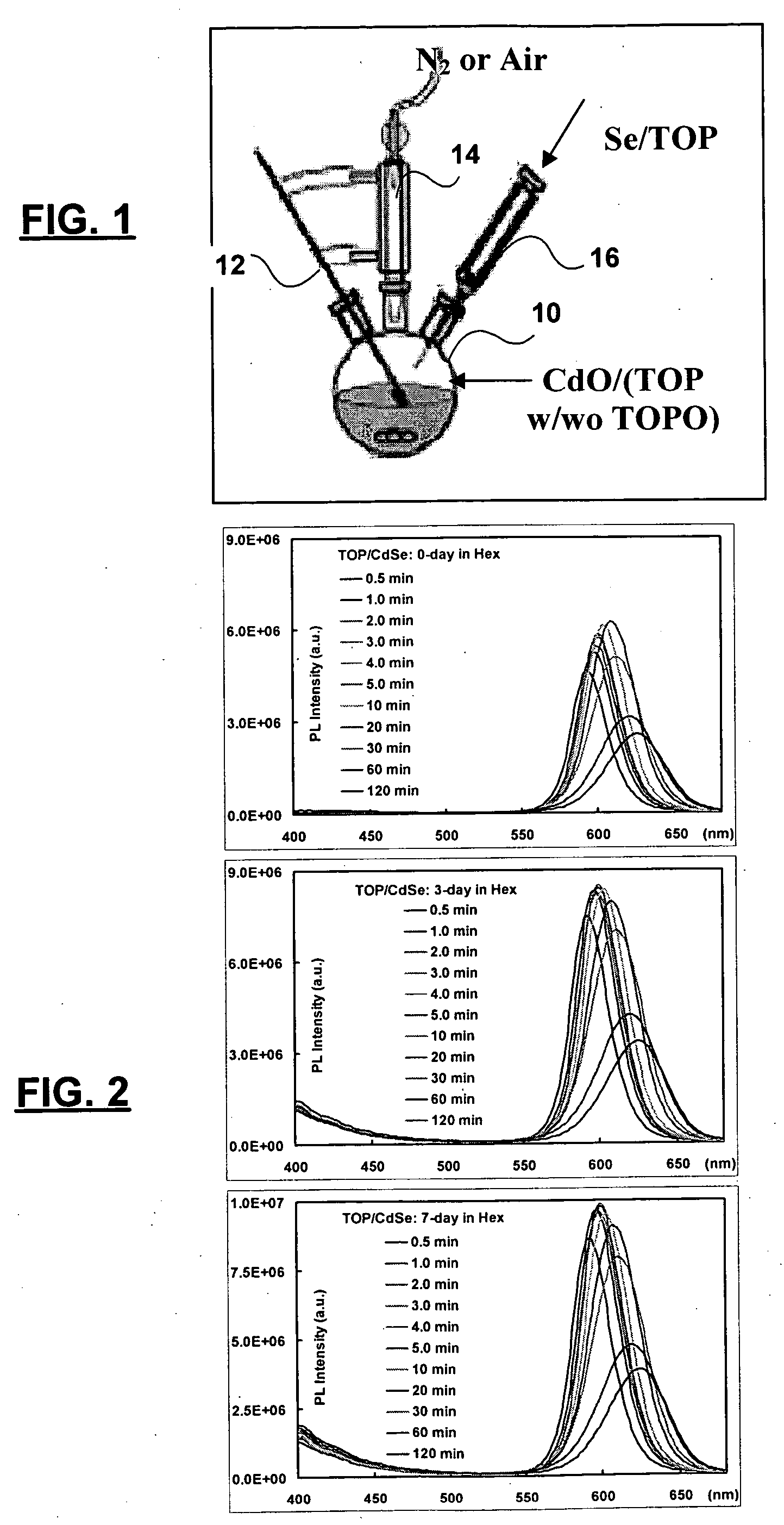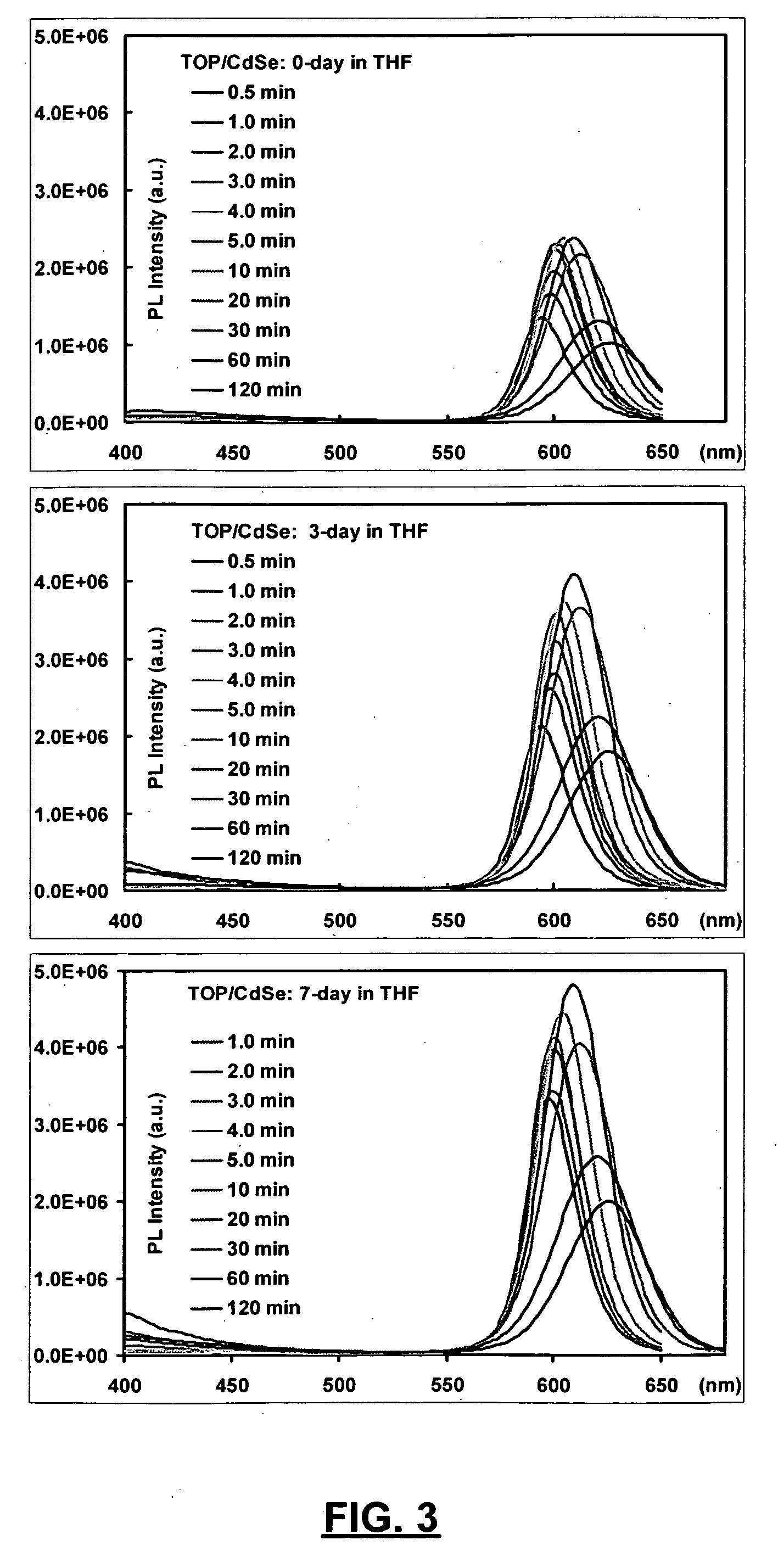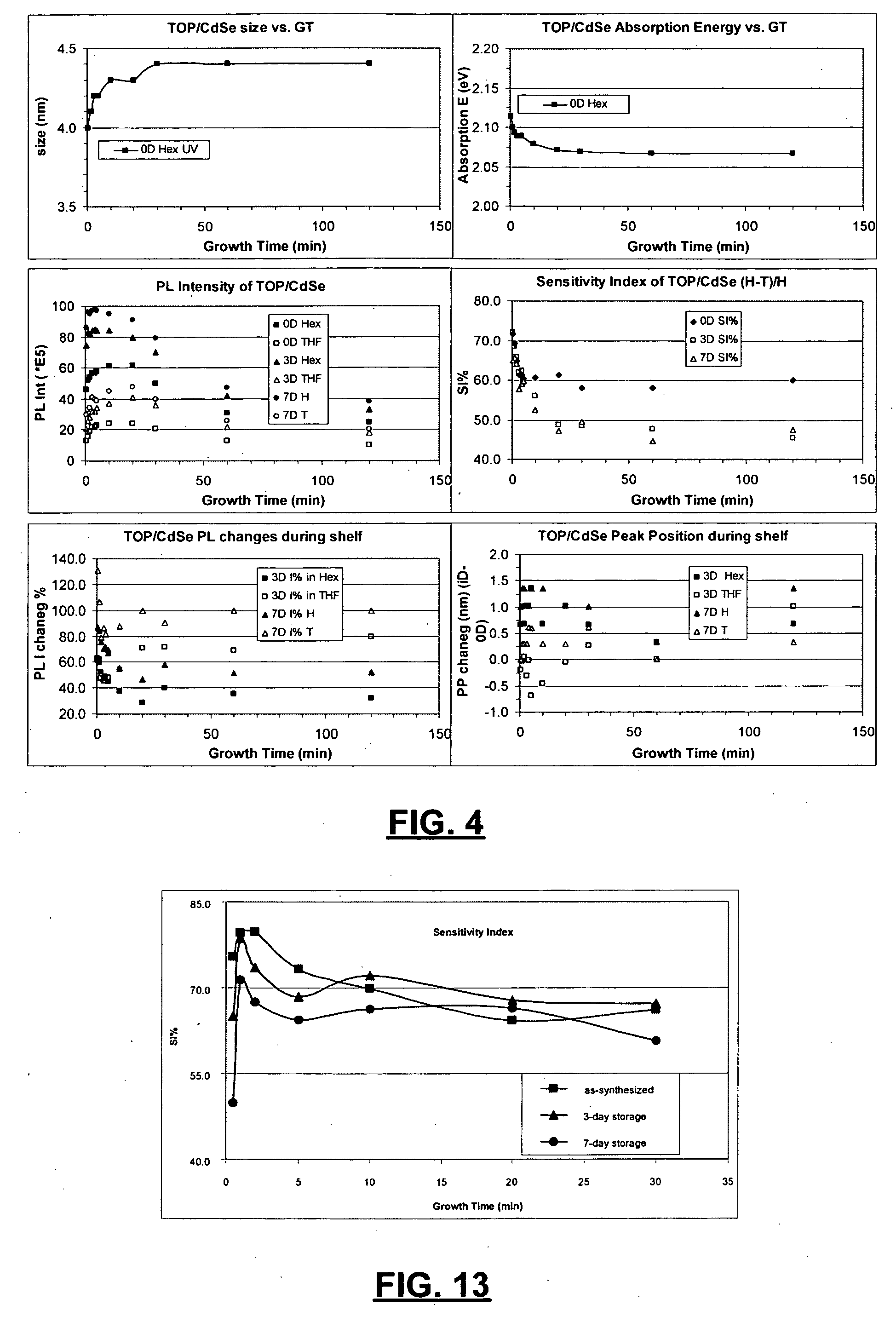Method of synthesizing colloidal nanocrystals
a colloidal nanocrystal and nanocrystal technology, applied in the field of semiconductor nanocrystal synthesis, can solve the problems of difficult control of the quality of such nanocrystals, high cost, explosive, etc., and achieve the effect of low cos
- Summary
- Abstract
- Description
- Claims
- Application Information
AI Technical Summary
Benefits of technology
Problems solved by technology
Method used
Image
Examples
example 1
[0074] TOP-capped CdSe was made by adding a solution of TOP / Se to CdO in TOP under the following conditions: [0075] CdO=12.8 mg (0.10 mmol) [0076] Se=3.78 mg (0.05 mmol) [0077] Cd / Se=2:1 [0078] TOP=1.58 g [0079] CdO=63.3 mmol / kg [0080] Nucleation temperature=300° C. [0081] growth temperature =250 C
[0082]FIG. 2 shows the PL spectra of CdSe with one-component surface ligands (namely TOP), dispersed in Hex, after 0 day (up), 3 days (middle), and 7 days (down).
[0083]FIG. 3 show the PL spectra of as-synthesized CdSe with one-component surface ligands (namely TOP), dispersed in THF, after 0 day (up), 3 days (middle), and 7 days (down).
[0084]FIG. 4 is an analysis of the UV and PL characterization of the as-synthesized CdSe with one-component surface ligands, dispersed in Hex and THF. The shelf time in Hex or THF is 3 days and 7 days.
[0085]FIG. 5 shows the PL spectra of CdSe with one-component surface ligands (TOP) dispersed in various solvents, the nanocrystals were two-day old after s...
example 2
[0088] CdSe was made by adding a solution of TOP / Se to Cd(Ac)2 in TOP under the following conditions: [0089] Cd(Ac)2=23.08 mg (0.10 mmol) [0090] Se=3.95 mg (0.05 mmol) [0091] Cd / Se=2:1 [0092] TOP=2.814 g; [0093] Cd(Ac)2=35.7 mmol / kg [0094] Nucleation temperature=300° C. [0095] growth temperature=250° C.
[0096]FIG. 8 shows the PL spectra of the synthesized CdSe with one-component surface ligands (namely TOP), dispersed in Hex (up) and THF (down).
example 3
[0097] TOP-capped CdTe as made under the following conditions: [0098] CdO=12.85 mg (0.10 mmol) [0099] Te=5.70 mg (0.05 mmol) [0100] Cd / Te=2:1 [0101] TOP=1.56 g [0102] CdO=64 mmol / kg [0103] Nucleation temperature=300° C. [0104] growth temperature=250° C.
[0105]FIG. 9 shows the PL spectra of as-synthesized CdTe with one-component surface ligands (namely TOP), dispersed in Hex. The PL intensity vs. growth time is plotted and inserted.
PUM
| Property | Measurement | Unit |
|---|---|---|
| temperature | aaaaa | aaaaa |
| temperature | aaaaa | aaaaa |
| molar ratio | aaaaa | aaaaa |
Abstract
Description
Claims
Application Information
 Login to View More
Login to View More - R&D
- Intellectual Property
- Life Sciences
- Materials
- Tech Scout
- Unparalleled Data Quality
- Higher Quality Content
- 60% Fewer Hallucinations
Browse by: Latest US Patents, China's latest patents, Technical Efficacy Thesaurus, Application Domain, Technology Topic, Popular Technical Reports.
© 2025 PatSnap. All rights reserved.Legal|Privacy policy|Modern Slavery Act Transparency Statement|Sitemap|About US| Contact US: help@patsnap.com



